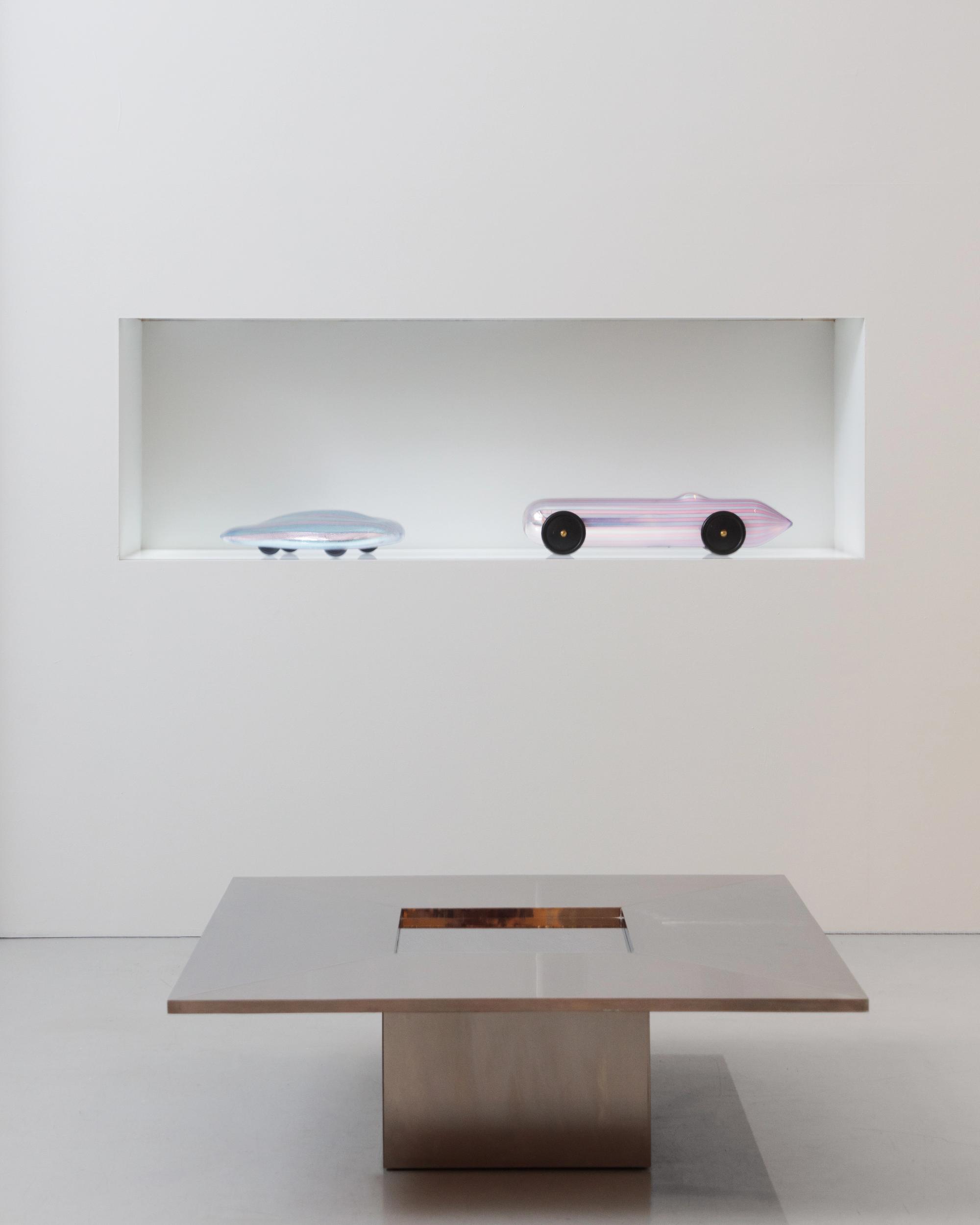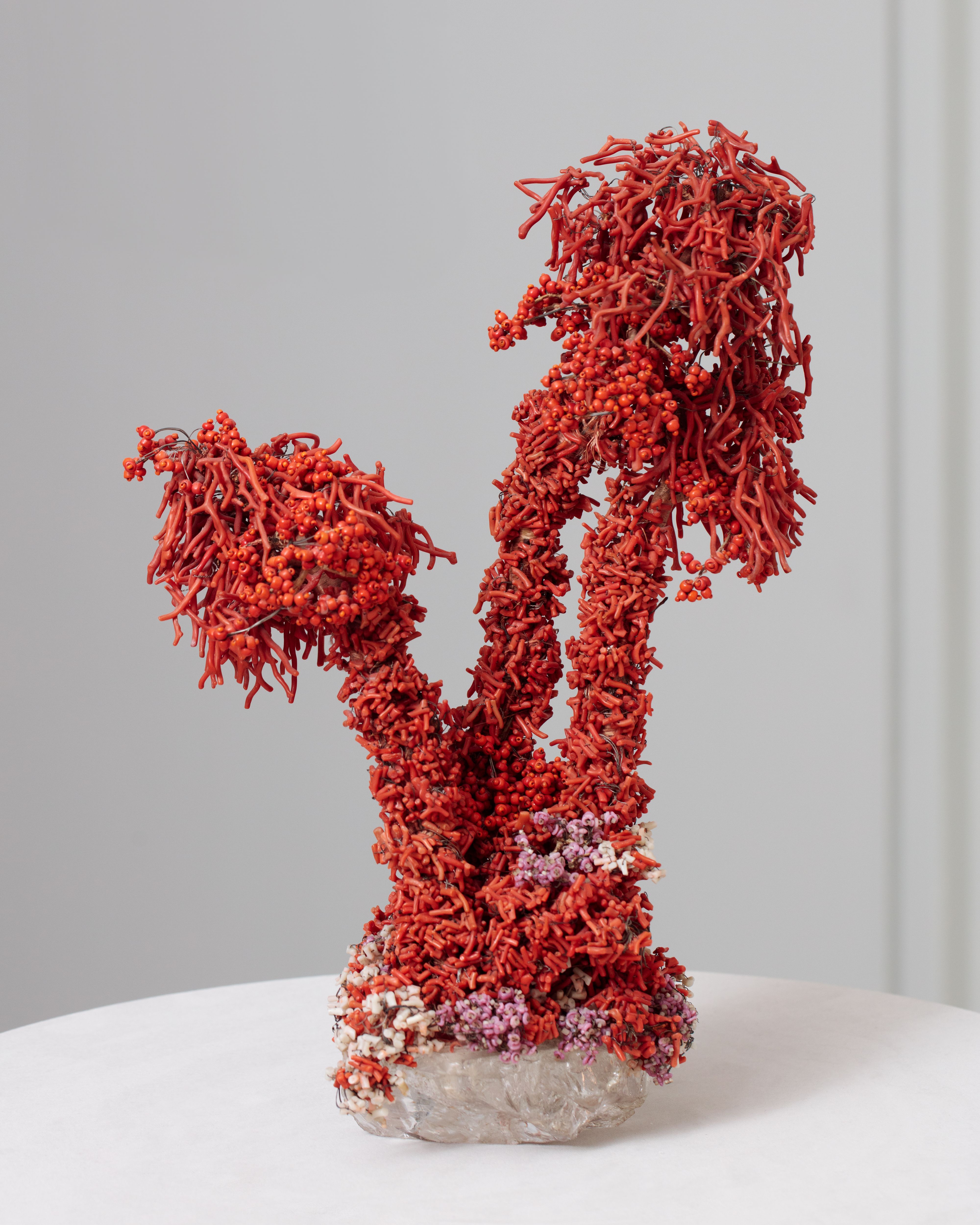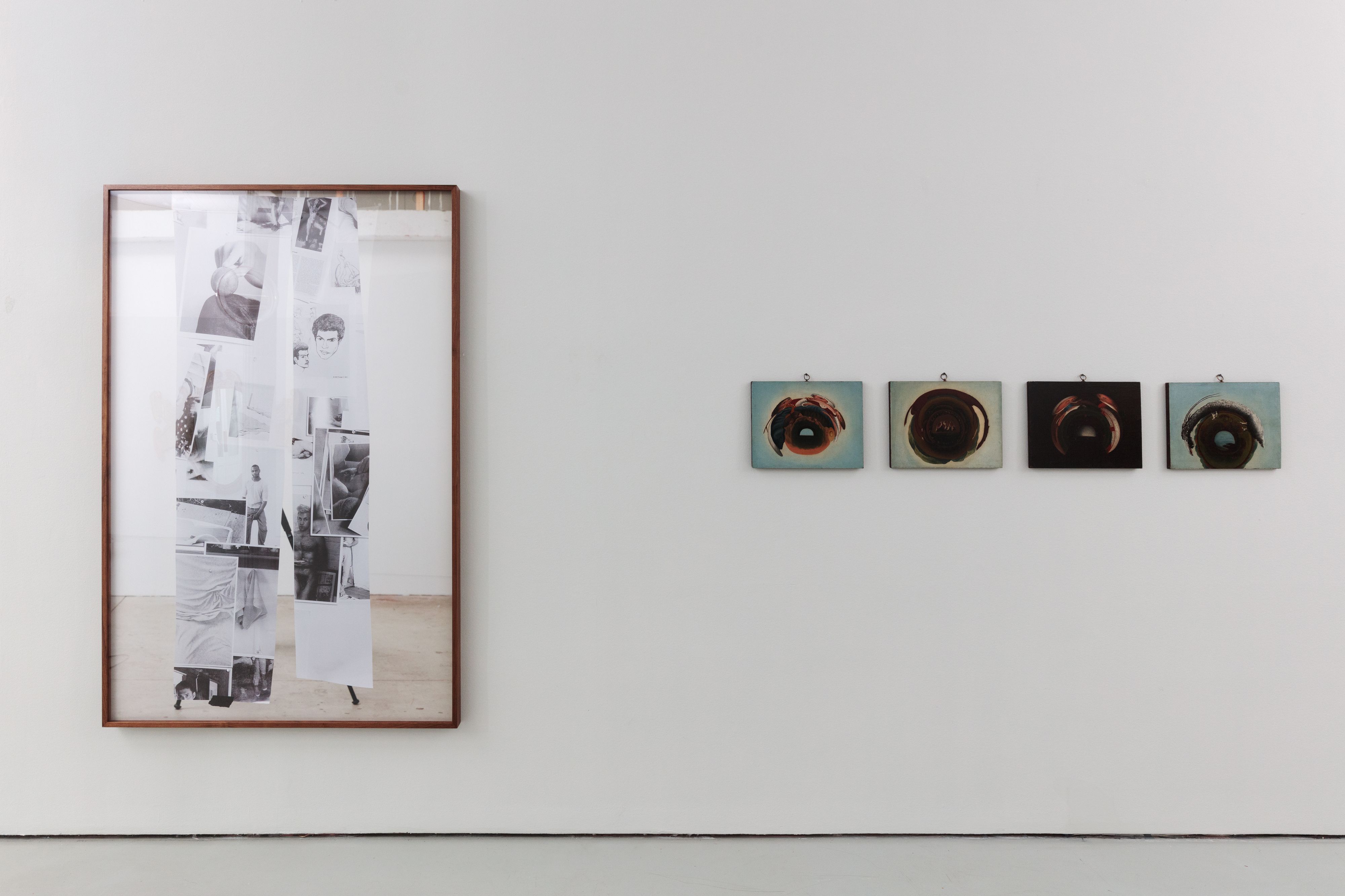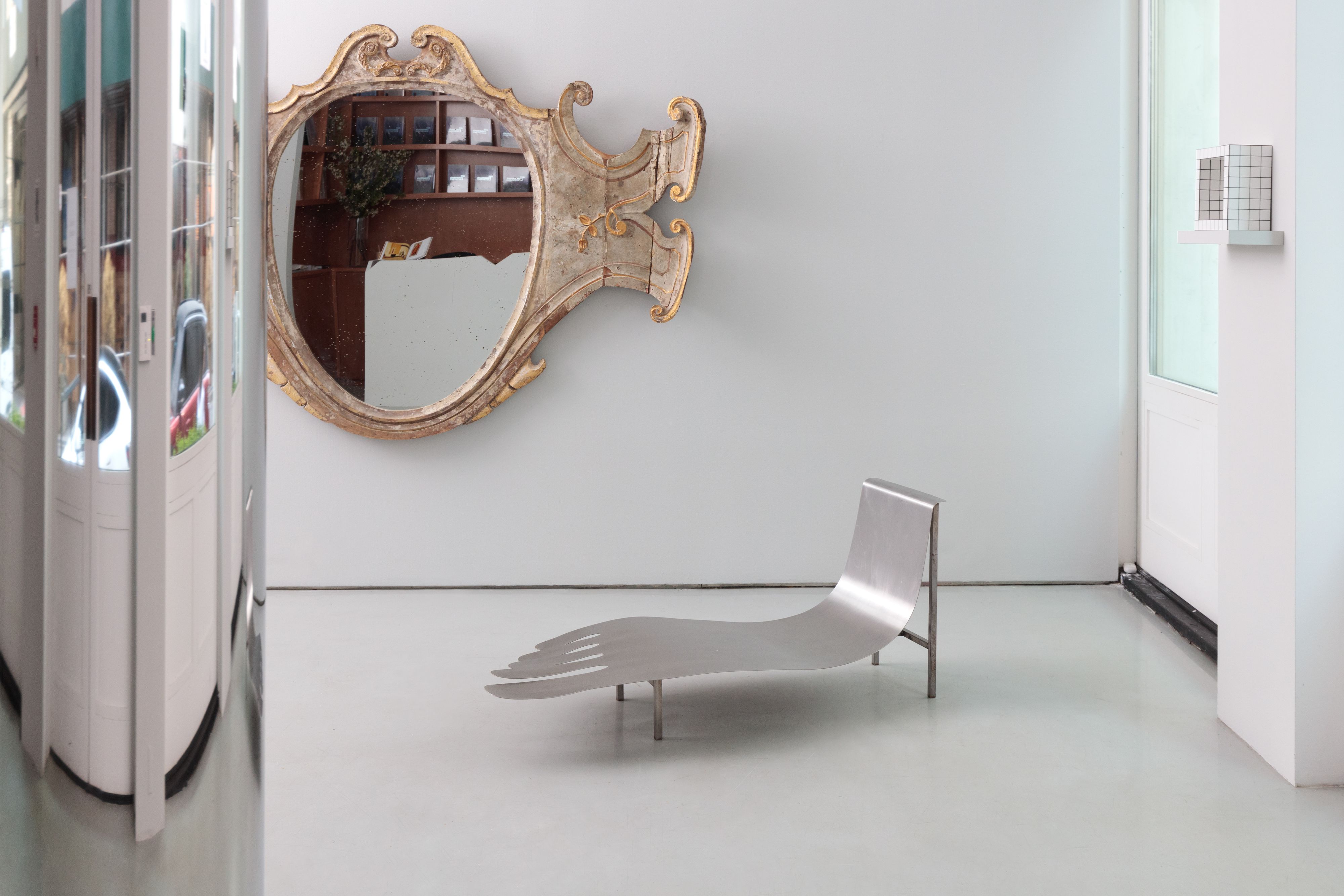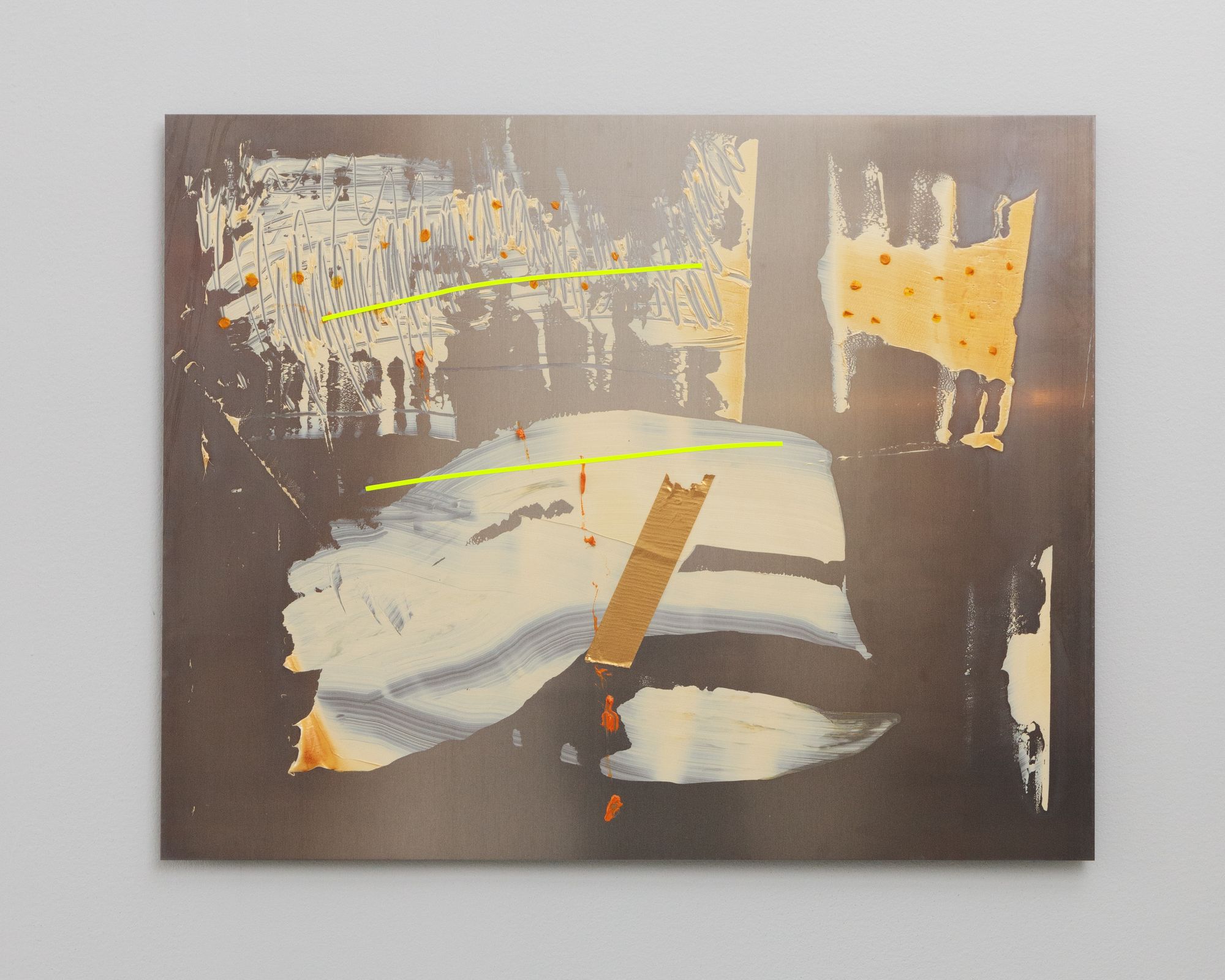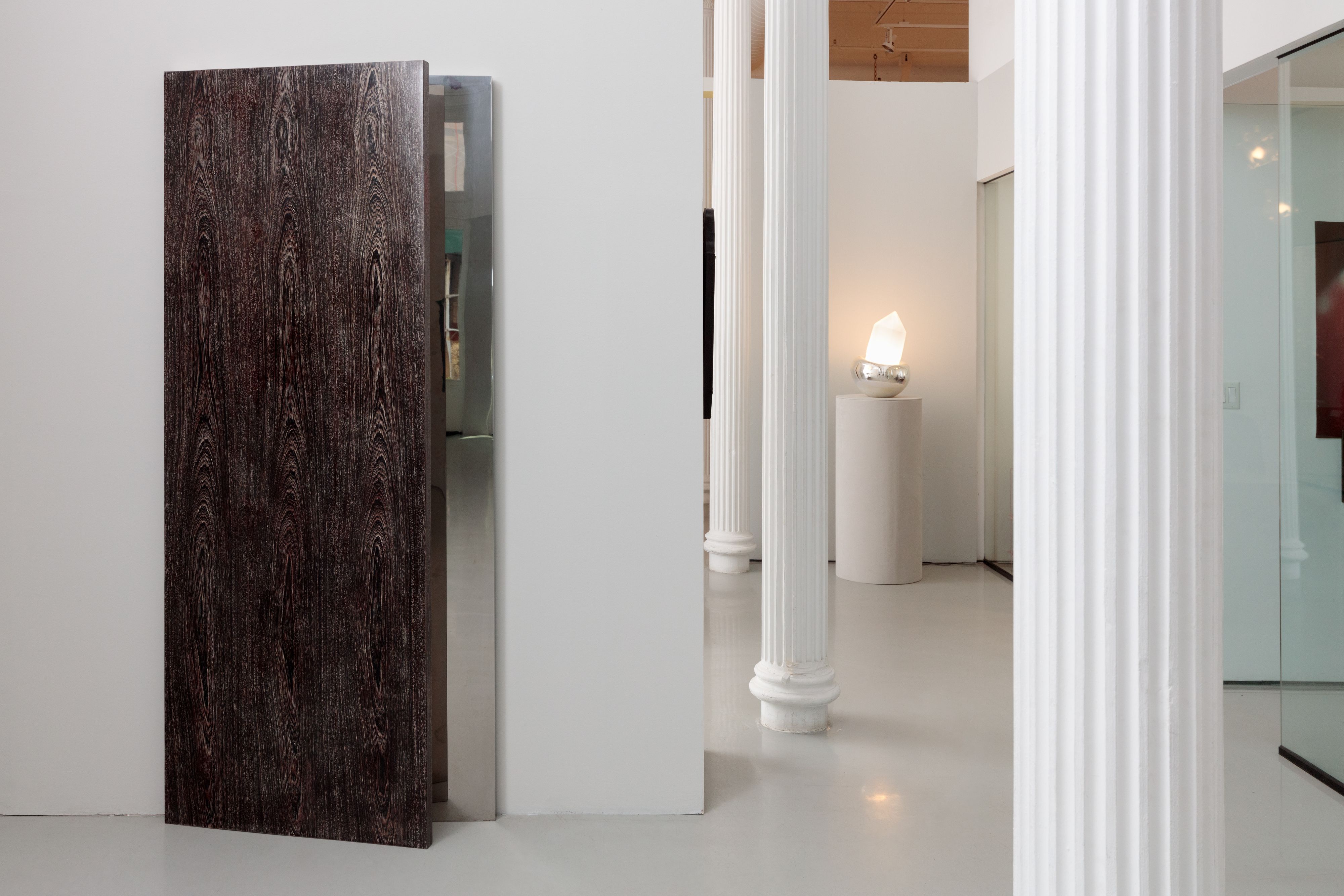Clearly, the duo have indulged their taste for eclecticism to the fullest. In the face of so many artistic periods and aesthetic styles, coherency can come into question. There’s no doubt that Glass Subjects has a dizzying effect, but this dissociation is demanded by the exhibition. Smart move. Is there any tool more useful than vertigo, if we wish to see sight seeing itself? The self self-ing itself?
As a frame for Glass Subjects, Charlap Hyman & Herrero took inspiration from Serge Roche’s Parisian gallery and its exhibitions of what he called objets de glace, works by himself and others made from glass and mirrors. Roche is today remembered as a designer for flamboyant midcentury European figures like Coco Chanel and Carlos de Beistegui, but Charlap Hyman & Herrero were more interested in his work as a gallerist and scholar. “Roche’s gallery had everything from Roman mirrors to contemporary mirrored Giacomettis,” says Charlap Hyman, “And he was obsessed with Versailles.” Roche (like CH&H themselves, perhaps) had a taste for the lurid, the Baroque. “There’s an overlap between the aesthetics of Roche’s Paris in the 20s and the 17th century. This can be traced, at least partially, to a set of antique silver furniture from the Hall of Mirrors [in Versailles] displayed for the first time at the Louvre. People lost their minds. Most of the silver furniture had been melted down to pay for the American Revolution. But that suite survived, and it ignited Roche’s imagination: he had a chair from it in his gallery.” In the back room of Glass Subjects, you will find the fruit of Roche’s obsession: his 1956 book appropriately titled Mirrors, appropriately sitting atop of a mirrored Maria Pergay coffee table.
When Roche closed shop on the Rue St. Honoré, his space was taken over by gallerist Jacques Kugel, and, for Glass Subjects, Charlap Hyman & Herrero worked with Galerie Kugel (now run by Kugel’s children and grandchildren), to source several of the exhibition’s most thrilling pieces. One of the show’s highlights is the Gothic, worm-eaten tabernacle attributed to Andrea Fantoni; borrowed from Galerie Kugel, its central mirror, flanked by rotting skeletons, serves as an intensely visceral memento mori. Elsewhere, a quartet of surreal, 18th century anamorphic oil paintings — painted by Henry Kettle and loaned from Kugel — hang on the wall. Place a curved mirror in the center and the images leap up off the canvas, re-constituted in three dimensions.
Charlap Hyman & Herrero are sensitive to the dual function that Roche’s “ice objects” serve. They shine with a luster both eye-catching and mind-bending. For the intellect, these objets d’art work as a kind of kaleidoscope through which to scry existential questions: “Who am I?” And in another, more primordial part of our lizard brain, these objects also function as a wonderful hoard — so much glittering treasure.
